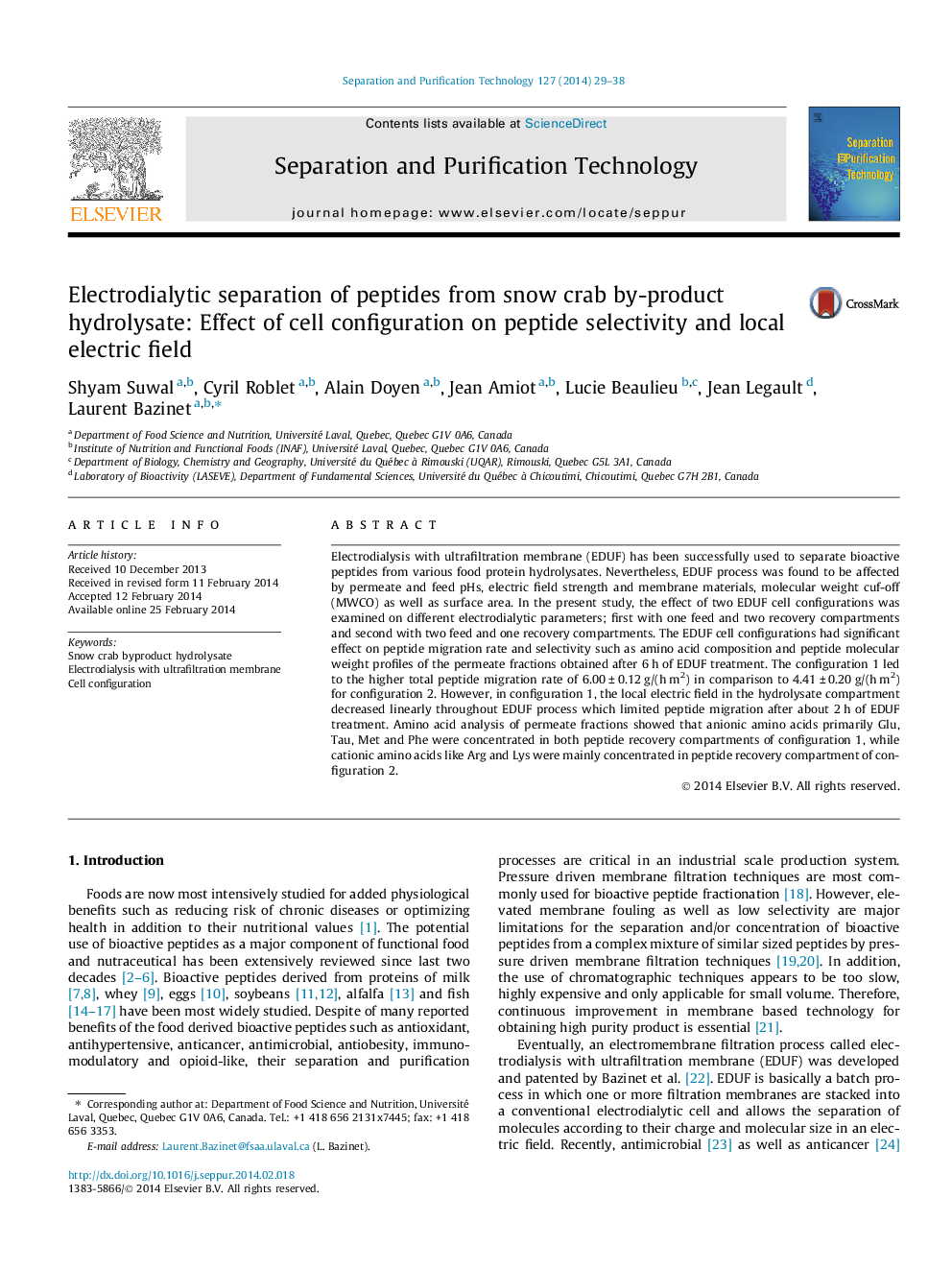| کد مقاله | کد نشریه | سال انتشار | مقاله انگلیسی | نسخه تمام متن |
|---|---|---|---|---|
| 641349 | 1456992 | 2014 | 10 صفحه PDF | دانلود رایگان |
• EDUF cell configuration affects peptide migration rate and peptide selectivity.
• The configuration favoring the demineralization decreases the local electric field.
• The decrease in local electric field limits the migration of peptide.
• EDUF process with constant local electric field sustains a linear migration rate.
Electrodialysis with ultrafiltration membrane (EDUF) has been successfully used to separate bioactive peptides from various food protein hydrolysates. Nevertheless, EDUF process was found to be affected by permeate and feed pHs, electric field strength and membrane materials, molecular weight cuf-off (MWCO) as well as surface area. In the present study, the effect of two EDUF cell configurations was examined on different electrodialytic parameters; first with one feed and two recovery compartments and second with two feed and one recovery compartments. The EDUF cell configurations had significant effect on peptide migration rate and selectivity such as amino acid composition and peptide molecular weight profiles of the permeate fractions obtained after 6 h of EDUF treatment. The configuration 1 led to the higher total peptide migration rate of 6.00 ± 0.12 g/(h m2) in comparison to 4.41 ± 0.20 g/(h m2) for configuration 2. However, in configuration 1, the local electric field in the hydrolysate compartment decreased linearly throughout EDUF process which limited peptide migration after about 2 h of EDUF treatment. Amino acid analysis of permeate fractions showed that anionic amino acids primarily Glu, Tau, Met and Phe were concentrated in both peptide recovery compartments of configuration 1, while cationic amino acids like Arg and Lys were mainly concentrated in peptide recovery compartment of configuration 2.
Figure optionsDownload as PowerPoint slide
Journal: Separation and Purification Technology - Volume 127, 30 April 2014, Pages 29–38
